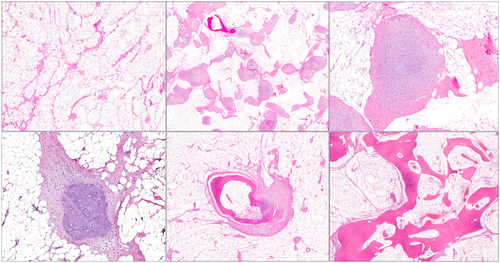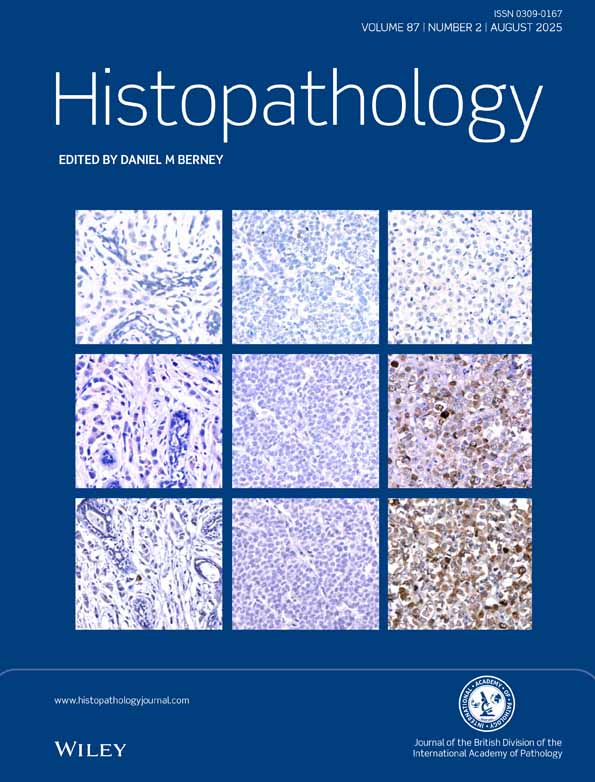Osteolipomas revisited: a detailed clinical, histologic and molecular characterisation
Rayan Rammal and Azfar Neyaz equal contribution.
Abstract
Aims
Lipomas are the most common mesenchymal neoplasms in adults, with osteolipomas representing a rare subtype characterised by metaplastic bone formation. The pathogenesis and molecular basis of osteolipomas remain poorly understood. While secondary ossification has been proposed as a potential mechanism, molecular characterisation of these tumours has been limited.
Methods and results
We retrospectively analysed 18 cases of osteolipoma, evaluating clinical, radiologic and histopathologic features. Results of fluorescence in situ hybridisation (FISH) for MDM2 amplification were documented. Whole transcriptome sequencing (RNA-seq) was performed on six tumours to identify potential gene fusions. Patients had a median age of 55 years (range, 34–73 years), with tumours primarily arising in the extremities. The majority were deep-seated, and a subset had a history of prior trauma. Histologically, all cases exhibited mature adipocytes with variable amounts of metaplastic bone and cartilage. In several cases, stromal progression was observed, with fibrous septa transitioning into fibromyxoid nodules, cartilage and ultimately bone, supporting a metaplastic ossification process. RNA-seq identified recurrent HMGA2 gene fusions, including HMGA2::LHFP, HMGA2::LPP and a novel HMGA2::PIK3R1 fusion, reinforcing their molecular similarity to conventional lipomas.
Conclusions
Our findings support the classification of osteolipomas as conventional lipomas undergoing secondary osseous metaplasia. The identification of HMGA2 fusions, along with their predilection for trauma-prone sites and the observed stromal progression towards bone, suggests a causal association with chronic mechanical stress. Recognising these features is critical to avoid misclassification, particularly as atypical lipomatous tumour/well-differentiated liposarcoma.
Graphical Abstract
In this study, we provide a comprehensive analysis of 18 osteolipomas, including a detailed morphological assessment and molecular characterization of a subset of cases. Our findings strengthen the limited existing research supporting that osteolipomas are conventional lipomas undergoing secondary osseous metaplasia. The identification of recurrent HMGA2 fusions, including the novel HMGA2::PIK3R1, underscores their molecular similarity to conventional lipomas.
Conflict of Interest
No competing interest for any author.
Open Research
Data Availability Statement
Data, analytic methods and study materials are available to other researchers upon request.





